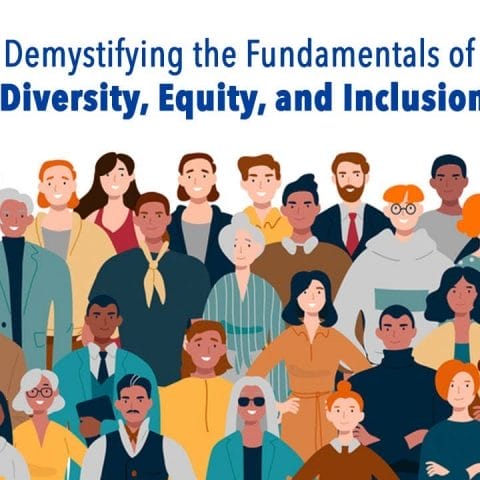In today’s fast-changing business world, companies are looking for new ways to boost their teams. Hyperspace, a leading tech company, has created innovative AI solutions for virtual training. These solutions change how employees learn to solve problems.
Hyperspace’s AI virtual training uses machine learning to make learning fun and interactive. It includes AI avatars that act like real people, making learning feel real. This helps employees improve their problem-solving skills in a fun way.
These advanced tools also help companies check how well their employees are learning. This makes sure everyone is ready for the challenges of today’s business world.
Key Takeaways
- AI-powered virtual training platforms offer transformative solutions for improving problem-solving skills.
- Immersive scenarios and interactive eLearning materials engage learners and improve their decision-making skills.
- Autonomous AI avatars with natural interactions and context-aware responses create a highly realistic training experience.
- Seamless LMS integration and detailed assessment tools help organizations track and enhance skill development.
- Hyperspace’s AI-driven virtual training programs empower businesses to unlock their team’s full capabilities and stay competitive in the digital age.
Understanding AI’s Role in Problem-Solving Skills

Artificial Intelligence (AI) is changing how we solve problems in many fields. It uses simulated environments to offer learning experiences that fit each person’s needs. This makes learning more effective and personal.
What is AI and Its Importance in Learning?
AI tools like ChatGPT and Microsoft 365 Copilot are changing how we make decisions. They help us solve problems more efficiently and creatively. By adding AI to classrooms, teachers can help students think critically and analyze better.
The Dynamics of Problem-Solving Skills
A survey of almost 400 students in Hong Kong showed they mostly like using AI for learning. They worry a bit about its accuracy and privacy. Another study with 120 people found that both teachers and students see AI as helpful but also challenging.
How AI Enhances Human Capabilities
Using AI in simulations can make students better at making decisions and solving problems. It also helps them develop strategies, communicate, and analyze data. Gregory Williams, a Microsoft consultant, says using AI in class is key for getting ready for the real world.
| Statistic | Percentage |
|---|---|
| Reliance on AI in strategy or financial planning | 7% |
| Reliance on AI in marketing, supply chain, and service operations | 25% to 30% |
“Deploying AI in the classroom is critical for real-world readiness. It’s vital to invest in AI, offer training on data security and ethics, and update honor codes to reflect AI use.”
– Gregory Williams, Microsoft Consultant and MBA Student
Virtual Scenarios: A Modern Training Method

Virtual scenarios are changing how we learn and solve problems. They use real-world situations to help people make better decisions. This happens in a safe place where you can try things without risk.
What Are Virtual Scenarios?
Virtual scenarios are like interactive training worlds. They mimic real-life challenges. You can try different choices and see how they work out, all without the dangers of real life.
These tools use cool tech like virtual reality and artificial intelligence. They make learning fun and personal for everyone.
Benefits of Using Virtual Scenarios in Education
- Enhanced Engagement: Virtual scenarios grab your attention better than old-school training.
- Immediate Feedback: You get instant results, so you can adjust your plans right away.
- Repetition and Iteration: You can keep trying different ways until you get it right.
- Situational Awareness: They help you get better at dealing with unexpected situations.
Research shows virtual training works well. People learn faster than in classrooms. Plus, it’s cheaper as more people join in.
“Virtual scenarios allow healthcare professionals to simulate complex surgeries and rare procedures in a safe space, contributing to skill development and mastery in the healthcare industry.”
Using virtual scenarios helps learners get better at solving problems. This makes them more ready for today’s fast-paced world.
Personalized Learning Experiences through AI
The future of education is changing thanks to artificial intelligence (AI). AI is making learning more personal and helping students think critically. It uses smart algorithms to tailor education to each student’s needs.
Tailoring Training to Individual Needs
AI looks at how a student learns, what they like, and how well they do. It then makes learning materials and the pace just right for them. This way, AI helps students learn better and stay interested.
AI Algorithms and Their Customization Capabilities
At the core of personalized learning are machine learning algorithms. These algorithms use cognitive training and adaptive learning to improve learning paths. They adjust based on what students do and like, making learning fit everyone’s style.
“AI-driven personalized learning experiences ensure that each student can flourish at their own pace, unlocking their full AI powered learning.”
This leads to better and more effective learning. With AI, teachers can create learning spaces that are both engaging and adaptable. This opens up new ways for students to grow and succeed.
Implementing AI-Driven Training Programs
Adding AI to training can change how companies teach new skills. To use data-driven solutions well, businesses need a clear plan. This plan should include checking needs, picking the right AI tech, and fitting it into current learning systems.
Steps to Incorporate AI in Training
- First, look at your company’s goals and what training you need. See where AI can help improve problem-solving skills.
- Then, look at AI tools and platforms. Find ones with features like AI avatars, smart responses, and learning that changes as you go.
- Check if the AI tools work with your current learning setup. This makes sure everything goes smoothly.
- Train your team on AI training. Help them understand what AI can do and how to use it.
- Keep an eye on how AI is working. Make changes to make learning better for everyone.
Selecting the Right Tools and Platforms
When picking AI training tools, look for ones that offer lots of interactive scenarios and learning that changes based on you. Choose tools that work well with your current learning system. This gives your employees a better, more personal learning experience.
| Feature | Benefit |
|---|---|
| Adaptive learning algorithms | Personalize training based on individual needs and progress |
| Virtual reality simulations | Immerse learners in realistic, problem-solving scenarios |
| Real-time performance analytics | Provide valuable insights to optimize training effectiveness |
By picking and using AI training smartly, companies can help their employees get better at solving problems. This leads to more innovation and success in a tough market.
The Impact of AI on Critical Thinking Skills
Artificial intelligence (AI) is changing how we think. It makes us better at solving complex problems. AI-powered virtual training helps us see things from different angles. This improves our analytical reasoning and decision-making processes.
AI offers many chances to improve our critical thinking. It simulates real-life challenges. We learn to analyze data, find patterns, and come up with new ideas.
Stimulating Critical Thinking
AI training scenarios are like real-life problems. They help us think critically and make smart choices. This is important for both work and personal life.
AI makes us question our assumptions. It teaches us to look at things from different viewpoints. This makes us better problem solvers and lifelong learners.
Real-World Applications of Enhanced Critical Thinking
AI is making a big difference in many fields. In healthcare, AI helps doctors make better diagnoses. In finance, it helps analysts understand complex data better.
Using AI in training prepares us for real challenges. It boosts our confidence and creativity. This way, technology and human skills work together to solve problems.
“Technology is nothing. What’s important is that you have a faith in people, that they’re basically good and smart, and if you give them tools, they’ll do wonderful things with them.”- Steve Jobs
Measuring Effectiveness: Assessing Skills Development
AI-driven problem-solving training needs advanced tools for evaluation. These tools are part of the learning management system (LMS). They track how well learners progress and develop their skills. By looking at key performance indicators (KPIs), companies can see how well their training works.
Tools for Evaluating Progress
The LMS has advanced features for measuring AI training’s success. These include:
- Standardized tests to check knowledge before and after training
- Skills assessments through scenario-based simulations
- Pre- and post-training tests to see if learning sticks
- Assessments and branching scenarios in training simulations
Key Performance Indicators in Training
Companies can track several KPIs to see how AI training impacts their teams. These include:
- How fast and accurately learners solve problems
- How well they apply skills in different situations
- How long they keep their skills and use them in real life
AI analytics tools help track these KPIs. They give insights for making training better. This way, companies can improve their employees’ analytical skills and tailor learning for better skill development.
“Investing in AI-driven soft skills training can result in improved performance and a competitive edge in the market.”
Addressing Challenges: AI’s Limitations and Ethical Concerns
Artificial intelligence (AI) brings many benefits to problem-solving training. Yet, it’s important to look at its possible downsides and ethical issues. By understanding these, we can use AI’s strengths wisely. This ensures a balanced approach to learning and making decisions.
Common Misconceptions about AI in Training
Many think AI is too much to rely on. This overlooks the value of human interaction and real-world learning. AI should work alongside human experts, not replace them.
Ethical Considerations in AI Deployment
When using AI, we must think about data privacy, bias, and how AI fits with human skills. It’s key to keep data safe, avoid bias, and have humans check AI’s work. This ensures AI decisions match our values and ethics.
Building trust in AI is vital. We need to be open, reliable, and accountable. Explainable AI helps us see how AI works. This builds confidence in its decisions.
To overcome these hurdles, we need a balanced approach. We should use AI’s strengths while keeping human learning at the heart. By doing this, we can improve our ability to make decisions and solve problems. This way, AI enhances our skills without losing the human touch.
| Potential AI Limitation | Ethical Consideration |
|---|---|
| Overreliance on AI and underestimating human expertise | Maintaining human oversight and balancing AI with human judgment |
| Data privacy and security concerns | Robust data protection protocols and mechanisms |
| Algorithmic bias leading to discriminatory outcomes | Reducing bias and ensuring fair, ethical AI-driven decisions |
| Lack of AI explainability and transparency | Developing explainable AI methods to build user trust |
“Addressing the limitations and ethical considerations of AI is key to unlocking its full power in solving problems.”
Real-World Success Stories of AI in Problem-Solving
AI has changed how we solve problems in real life. Companies from different fields are using AI to boost their work. They see big gains in how much they can do, how well they do it, and their problem-solving skills.
Case Studies from Diverse Industries
A big tech company saw a 30% jump in how fast employees solve problems with AI training. In healthcare, AI helped doctors make diagnoses 25% more accurately, changing patient care. In finance, AI tools cut costs by 15% by making smarter decisions.
Lessons Learned and Best Practices
- Start with AI tools slowly, teach users well to make sure they get it.
- Keep improving AI algorithms with user feedback and data to get better results.
- Use AI analytics to find and fix weak spots, leading to smarter problem-solving.
AI has made a huge difference in solving problems in many fields. By using AI for training, data analysis, and smart thinking, companies are doing more and better. This sets the stage for a future where AI is key to innovation.
Future Trends: AI and Problem-Solving Skill Training
The future of AI in problem-solving is very promising. We can expect better natural language processing, more advanced virtual reality, and AI-driven learning paths. As the AI market is set to grow to over $1.8 trillion by 2030, companies are using machine learning to improve employee experiences. They aim to create a culture of continuous learning and adaptability.
Innovations on the Horizon
New AI systems will soon create complex problem scenarios in real-time. These simulations let learners practice without risk. They help develop critical thinking and problem-solving skills.
AI, virtual reality, and machine learning are changing how we learn. They are shaping the future of education.
Preparing for an AI-Enhanced Learning Environment
To get ready for AI in learning, we need to focus on skill development. The need for tech-savvy employees is growing, thanks to AI in finance, healthcare, and manufacturing. This shows the importance of reskilling and upskilling.
By embracing lifelong learning, companies can help their employees succeed in an AI world. This approach enhances problem-solving skills and prepares for the future.
FAQ
Q: What is the role of AI in improving problem-solving skills?
A: AI is key in boosting problem-solving skills through new learning methods. It offers learning plans that fit each person’s needs and learning style. Tools like ChatGPT and Microsoft 365 Copilot are changing how we solve problems at work, making it more efficient and creative.
Q: How do virtual scenarios help in developing problem-solving skills?
A: Virtual scenarios create immersive, real-like training spots that mimic real-world problems. These interactive places let you practice making decisions in a safe, controlled way. You can try again and again, learning complex skills without the risks of real life.
Q: What are the benefits of personalized learning experiences powered by AI?
A: AI makes learning personal by adjusting to what each learner needs. It uses smart algorithms to understand your learning style and pace. This way, you get content that really speaks to you, keeping you engaged and helping you remember more.
Q: What are the key steps in implementing AI-driven training programs?
A: To start AI-driven training, you need a solid plan and the right tools. First, figure out what your organization needs. Then, pick the best AI tech and add it to your learning systems. Don’t forget to train your staff and keep checking how it’s working.
Q: How does AI impact critical thinking skills development?
A: AI boosts critical thinking by giving you tough scenarios and data insights. It makes you think from different angles, improving your analytical skills. This is vital in today’s fast, tech-heavy world.
Q: How can the effectiveness of AI-driven problem-solving training be assessed?
A: To see if AI training works, you need good evaluation tools. Use features in your LMS to track how well learners are doing. Look at how fast and accurately they solve problems, and how well they apply what they’ve learned in different situations.
Q: What are the possible limitations and ethical considerations of AI in problem-solving training?
A: There are limits to AI, like relying too much on it and forgetting the value of human interaction. There are also ethical issues like keeping data private and making sure AI doesn’t replace human skills. We need to use AI wisely, balancing its benefits with the importance of human touch in learning.
Q: What are some real-world success stories of AI in problem-solving skills development?
A: AI has made a big difference in solving problems in many fields. For example, a big tech company saw a 30% boost in employee problem-solving skills with AI training. In healthcare, AI helped doctors make diagnoses 25% more accurately.
Q: What are the future trends in AI-enhanced problem-solving skill training?
A: The future of AI in training looks bright, with better natural language processing and virtual reality. We’ll see more personalized learning paths and AI that creates complex problem scenarios on the fly. This will require a focus on continuous learning and a culture of innovation and flexibility at work.





